Video and Audio Recordings
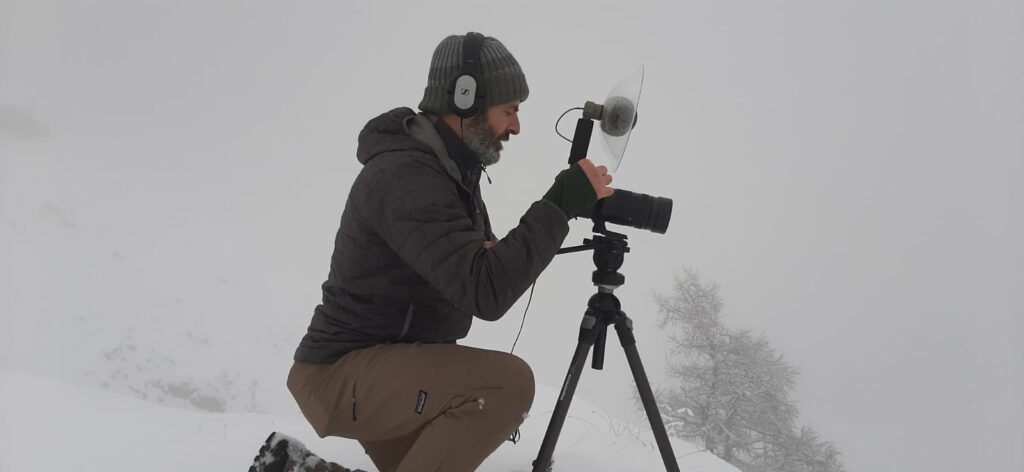
Here the well-known naturalist videomaker Marco Omodei Salé at work. He mainly works in the Dolomite environment, but does not disdain filming species of the plain, where he spends most of his days.
At the link below we can see some wonderful videos he made in recent years
https://vimeo.com/user50958351
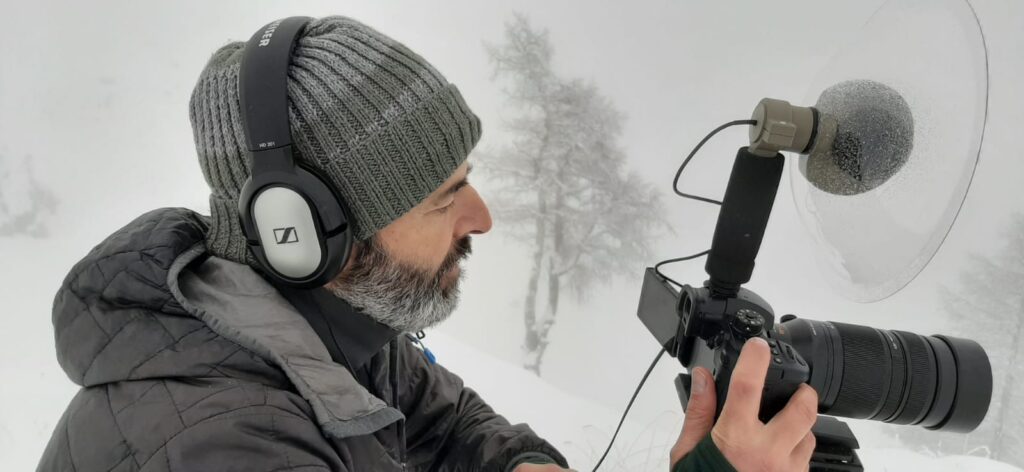
Here he is tuning the settings of one of his many cameras, in this case a Panasonic GH5s combined with the Naturesound 24 cm diameter mini stereo parabolic microphone.
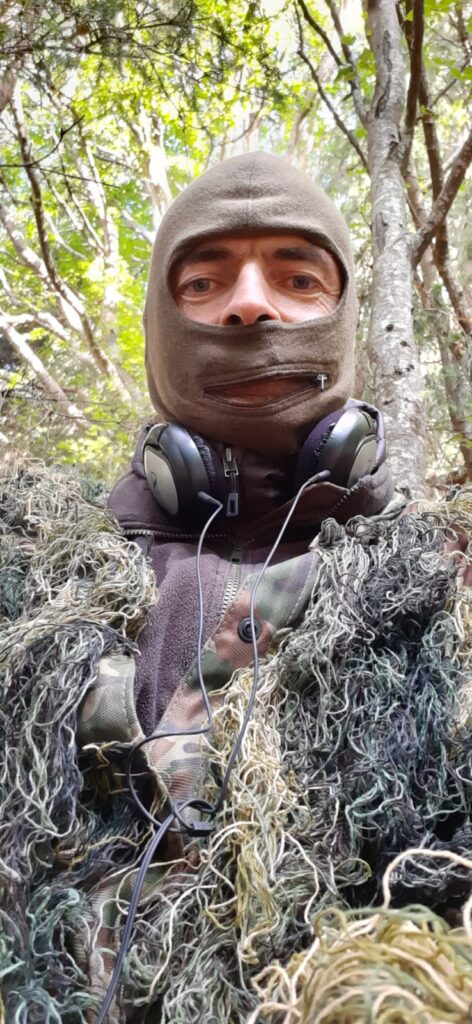
Here we see Marco camouflaged, ready for action!
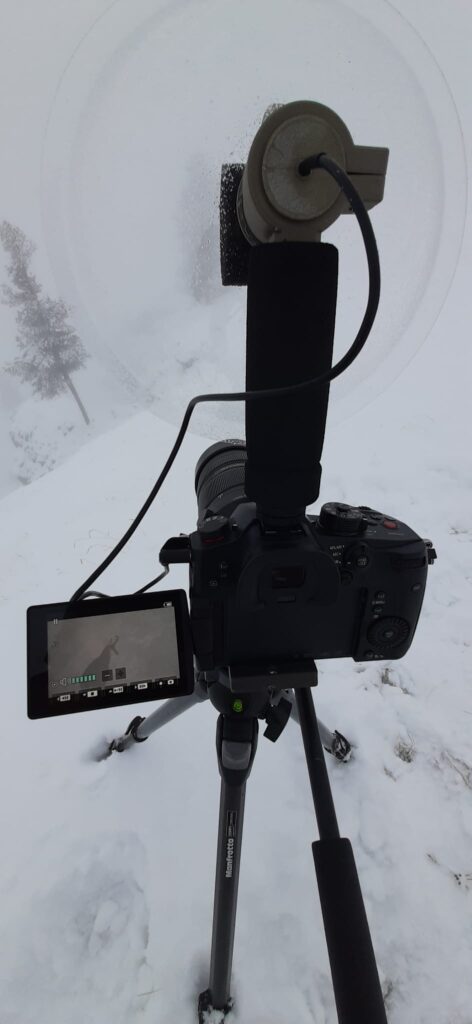
Here is a splendid chamois, visible in the video camera display
similar songs but completely different animals
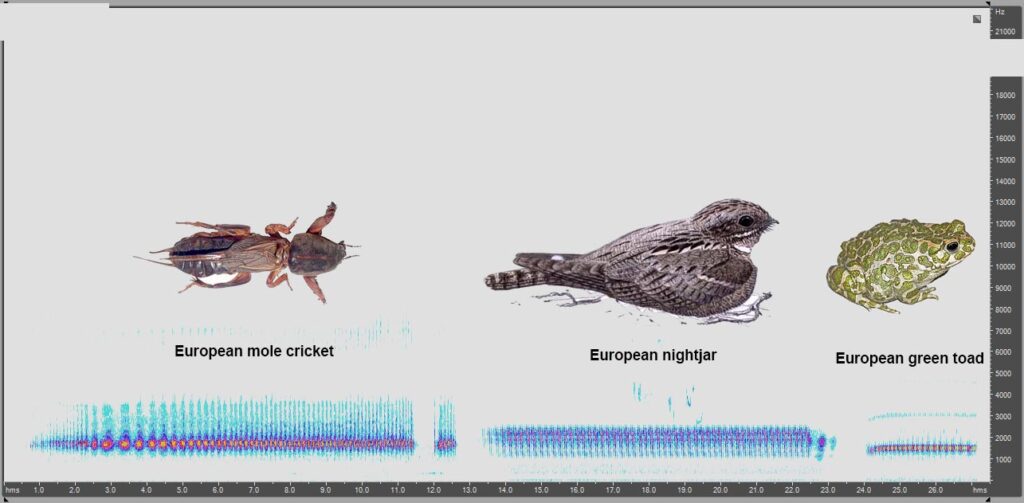
The use of a Stereo Microphone in a 33 cm parabolic dish
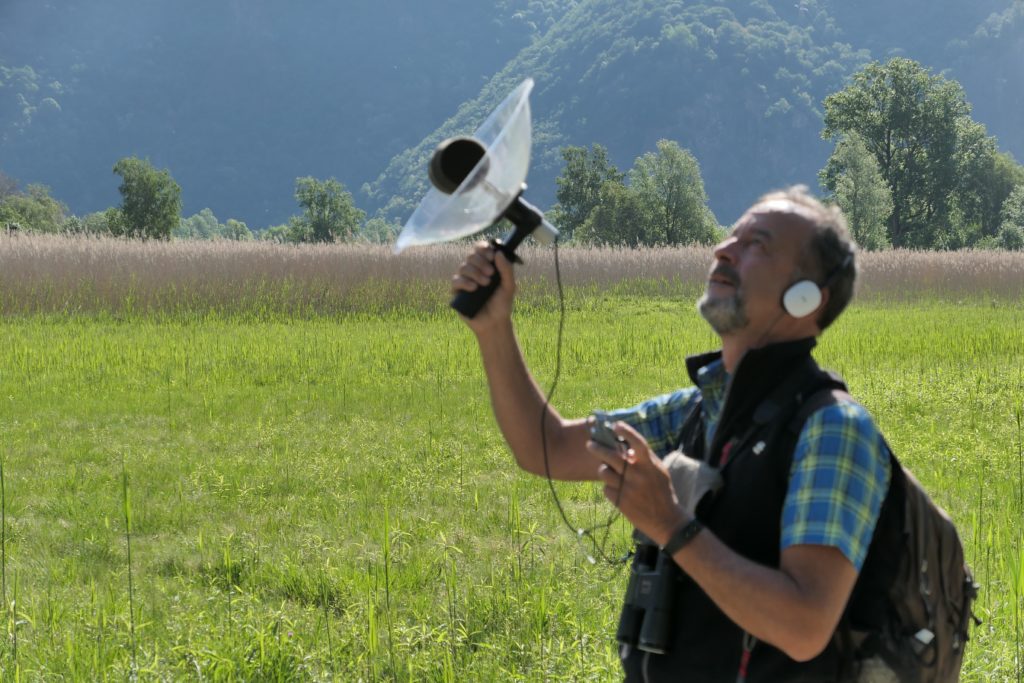
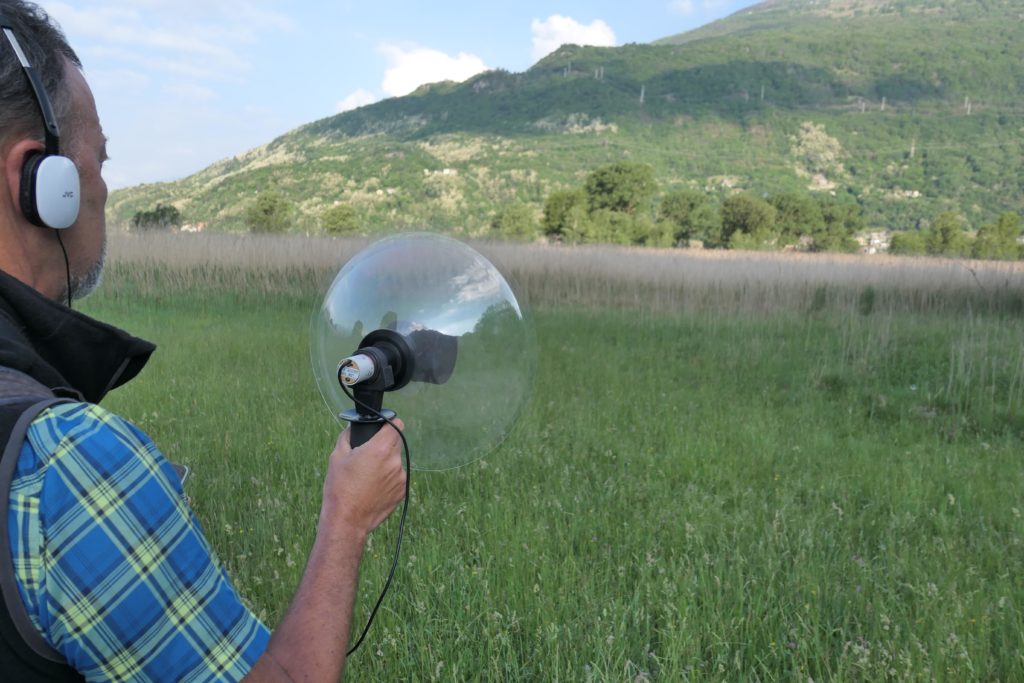
To achieve a recording of a subject in its soundscape context (which represents the acoustic photograph of the environment we are investigating), we need to use a stereo recording, better if a wide focused parabolic stereo microphone system.
By adopting the stereo configuration with the capsules positioned in a “non-traditional way”, quite outside of the focal point of the parabolic dish, Guido Pinoli and Gianni Pavan were able to obtain (at Pian di Spagna Como-Sondrio – I) an enlargement of the background sound scene, approaching the perfect stereophonic effect that is difficult to achieve when using a traditional parabolic microphone.
_________________________________
Here an excellent soundscape recorded on 2020-May-21 by Guido Pinoli at “Capanne di Marcarolo” nature park (Genoa) – I – Parabolic stereo Microphone, 33 cm Dish.
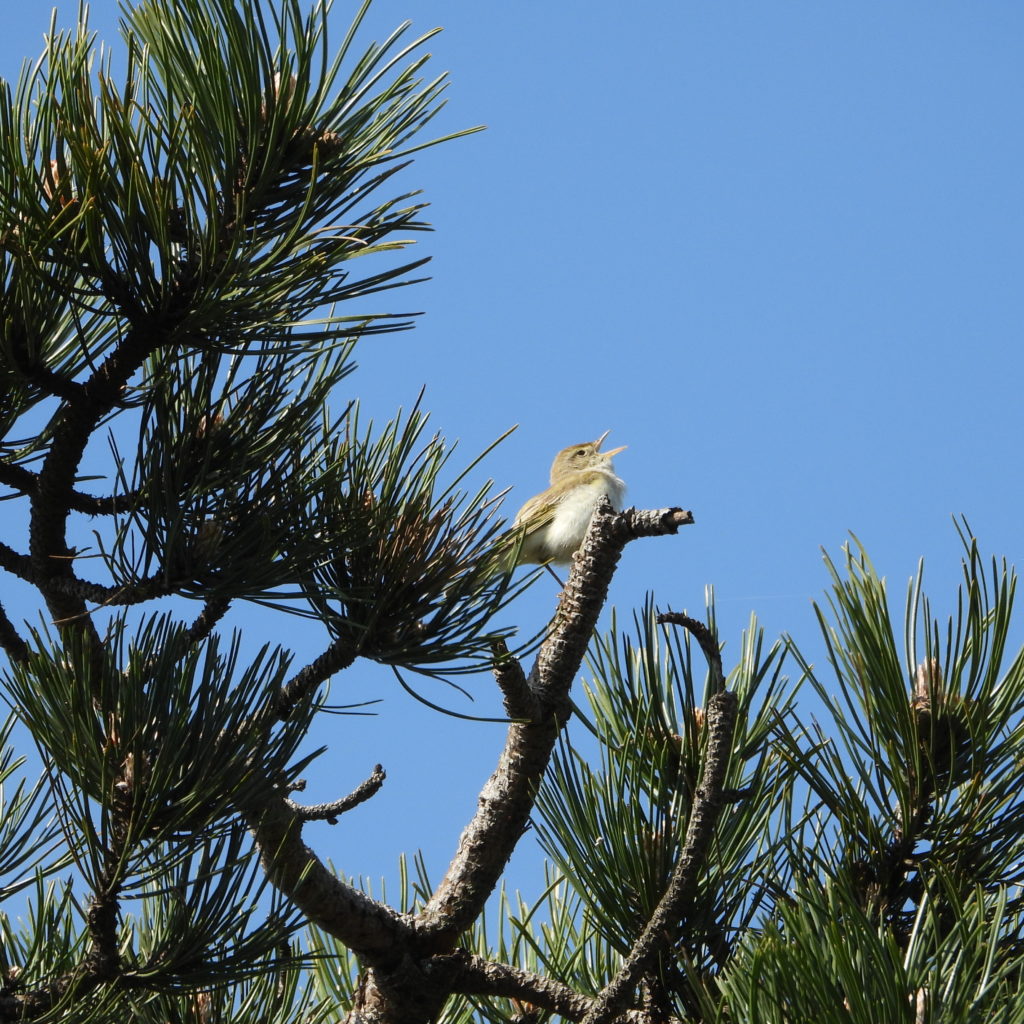
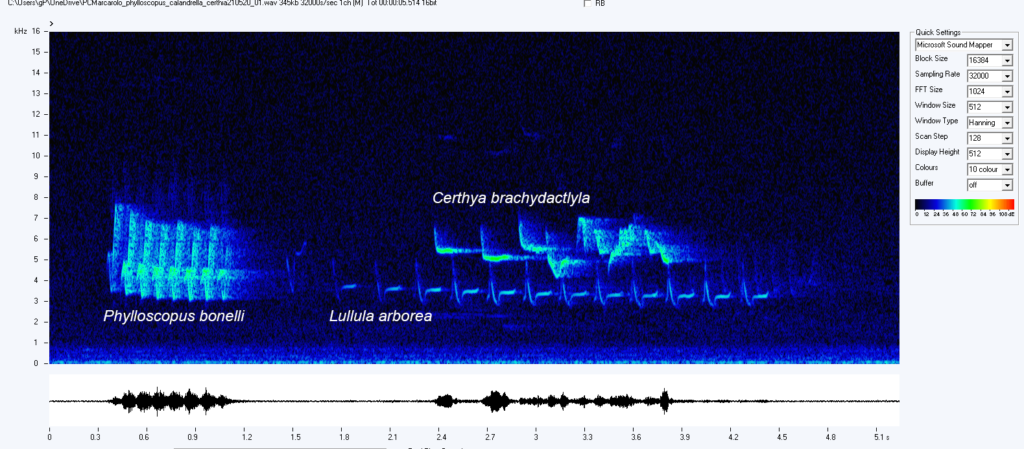
To underline that for Certhya brachydactyla and Lullula arborea there is no overlap in frequency and the two songs stand out visually and are perfectly separable.
Recording by Guido Pinoli
Spectrogram created using SeaPro by Gianni Pavan / CIBRA / Università di Pavia – http://www.unipv.it/cibra/seapro.html
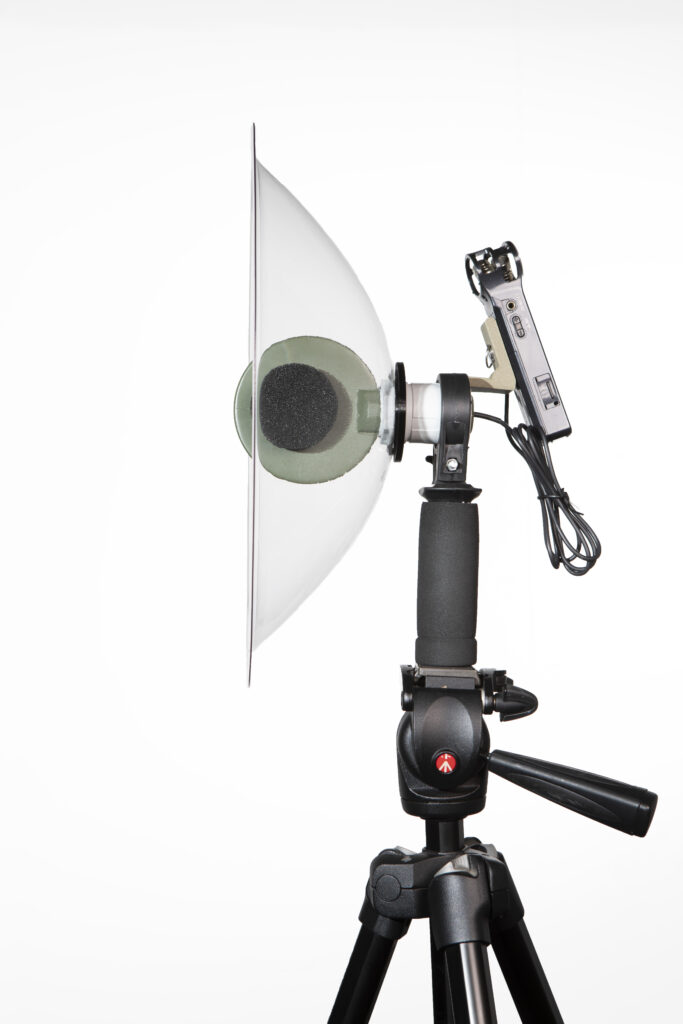
_______________________________________________
Here are two very short examples of video recording with audio coming from the same 33 cm parabolic dish, same Primo EM172 microphones, but powered by the video camera through Phantom 48V.
Cervus elaphus rutting
Buteo buteo singing in the snow
Thanks to the courtesy of Marco Omodei Salé
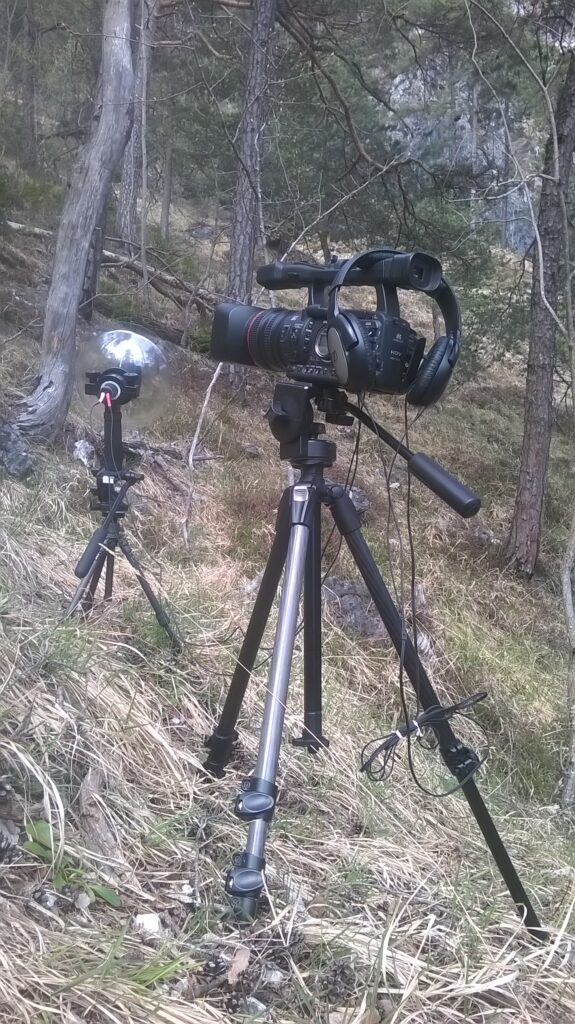
Canon XHA1 and 33 cm Stereo Parabolic Microphones System

Marco Omodei Salé, the author of the two videos above; the wildlife filmaker is perfectly camouflaged ready for a naturalistic video shooting session
See also https://www.naturesound.it/2020/12/04/video-and-audio-recordings/
Hoverfly Episyrphus balteatus “warm-up”!
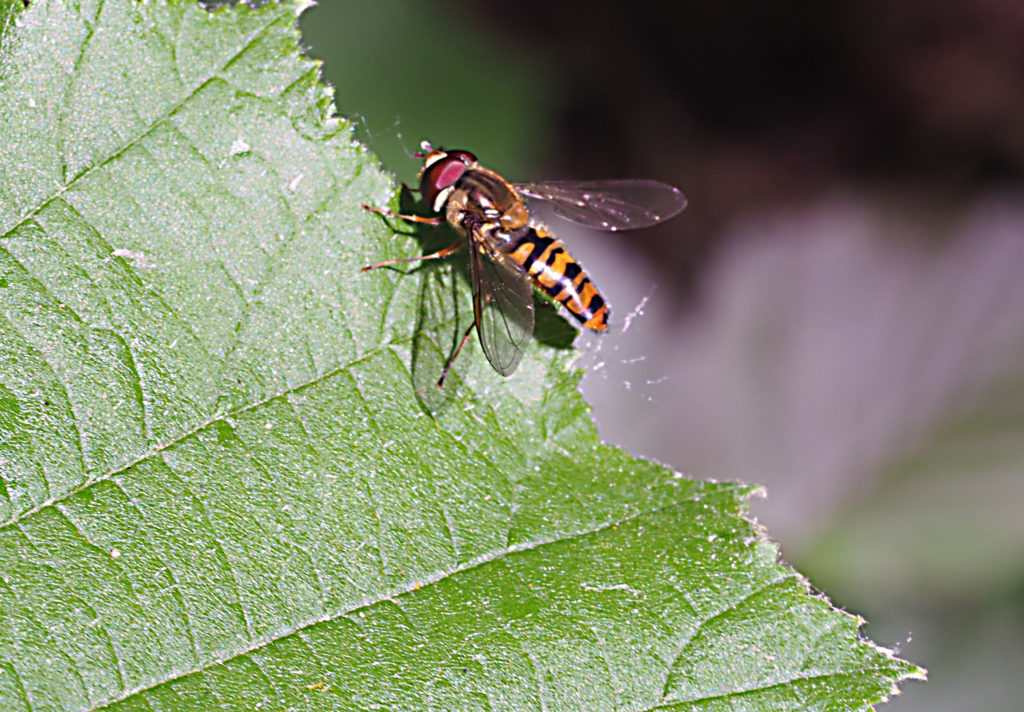
Last morning I was looking for some call or song of migratory birds that in this season migrate through our latitudes, when I was attracted, in audio headphones, by the buzz of an insect, a particularly “annoying” buzz. I directed my Sennheiser ME66 half shotgun directional microphone towards the sound source, by means of hearing, without first seeing what and what the subject was. Once the sound was focused, I noticed that it was emitted by a Hoverfly sp. laid on an Elderberry leaf.
That seemed unusual to me in that I had never noticed this behavior by the hoverflies, but I must say the truth that it is not a group of insects to which I have ever paid particular attention.
At first I thought of something inherent to a territorial / reproductive behavior.
I took some photos, made some short videos, but above all I made some audio recordings. Talking to my friend Cesare Brizio, particularly well versed in some groups of insects, he suggested a possible explanation for this phenomenon, assuming a sort of warming up before flying away in displacement and courtship.
Formulated this hypothesis, in the next days I devoted myself to a more accurate observation. Actually I was able to notice that, after having made some short flights, some subjects landed on the leaves exposed to the sun, almost imperceptibly vibrating the wings but at a considerable “speed”, at the same time emitting a particularly high hum in frequency with respect to the frequency in Hertz at which we are used to hearing the normal buzz of flight. This hum then tended to increase more and more in frequency until it reached a point where the subject suddenly took off, instantly changing the buzzing to the classic flight buzzing.
So, may be a behavior to be defined as described as a sort of warm up, or may it have to do with a territorial / reproductive behavior? In the absence of any bibliographical information, I will continue my observations, if only to satisfy my curiosity!
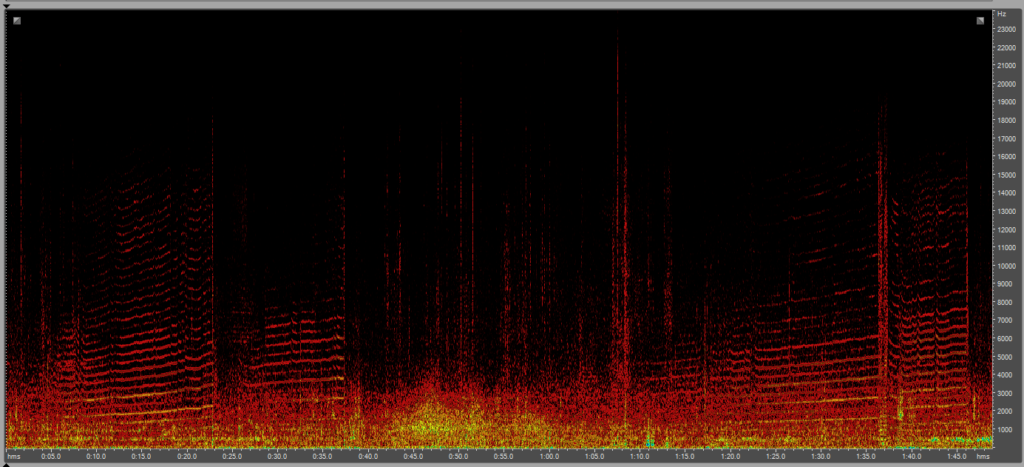
Ortolan Bunting
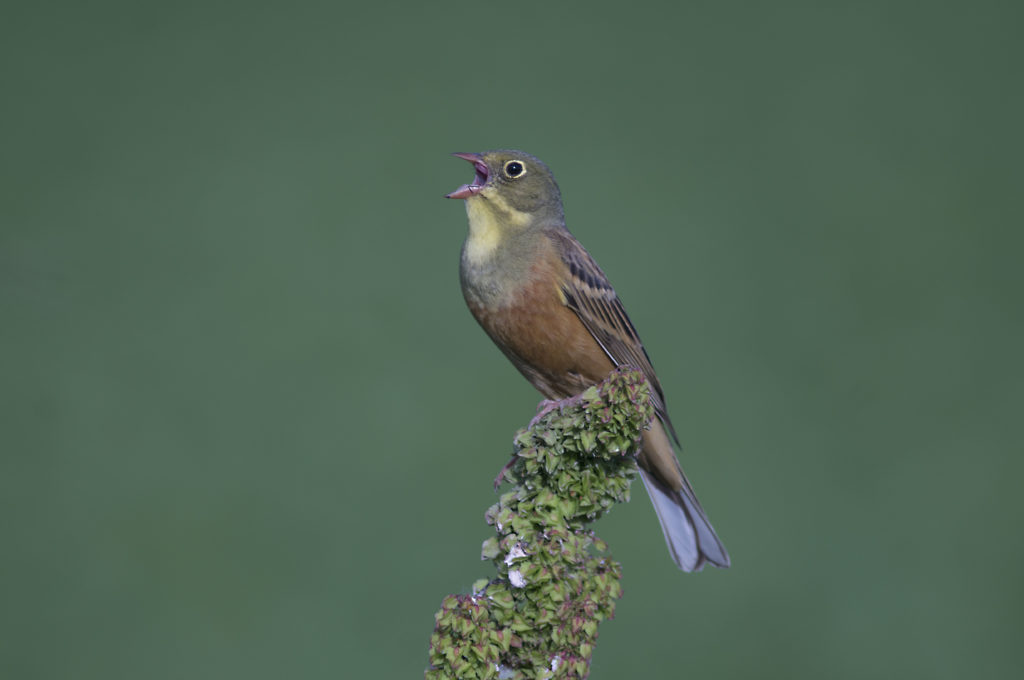
Ortolan bunting song.
Recorded using a mid MONO parabolic microphone – 2 x Primo EM172 caps and a 33 cm dish.
Filmed with a Sony Nex6 + adapter and a Lens Nikon 400 IF-ED 5,6.
Special thanks to Gastone Pivatelli.
Marsh Warbler Song
Nightingales Duet song in a marshy environment
TETA – DIY Stereo Microphone – AOM 5024L capsules
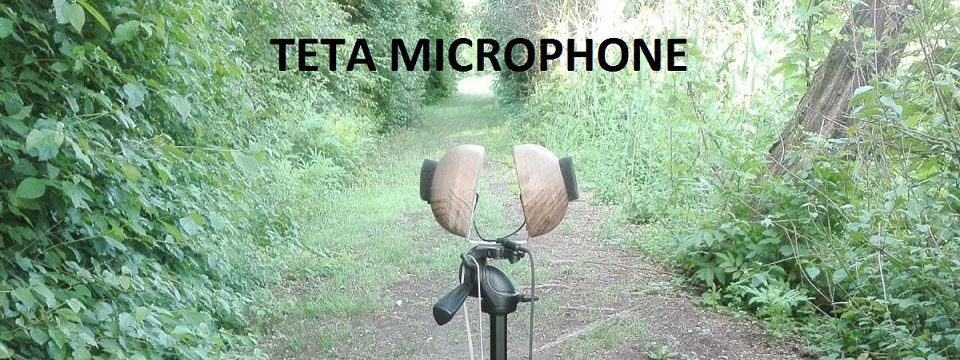
Nightingales Duet song in a marshy environment
Bufotes VIRIDIS
European green toad – Bufotes viridis – Rospo smeraldino
Recorded using a Telinga PIP parabolic microphone (Plug In Power, with direct power supplied by the Zoom H1 digital audio recorder).
Registrazione effettuata mediante l’utilizzo di un microfono parabolico Telinga PIP (Plug In Power, con alimentazione diretta fornita dal registratore audio digitale Zoom H1).
Blackcap Song… and More!
If we take in apart the aspect of its song, the Blackcap, Sylvia atricapilla, is a very crazy bird!
When we hear an unusual bird song, before thinking of any kind of bird unknown to us, it’ll be better if we exclude the possibility that it could be a Blackcap!
The Blackcap song is one of the least stereotyped that can be heard among the european birds, characterized by local dialectal variations. Moreover, it is frequently given in the form and with imitative phrases of other bird species, which generates further confusion for a correct ID.
Do we want to make life even more complicated? Let’s compare the song of the Blackcap to that of the Garden Warbler, Sylvia borin, and the damage is done!
PS For the Garden Warbler take a look at the images shown in reverse mode.
____________________________________________________________________________________________________
Se prendiamo in considerazione l’aspetto del canto, la Capinera, Sylvia atricapilla, è da considerarsi una specie veramente pazza!
Quando sentiamo un canto strano, prima di pensare a qualsiasi altra specie di uccello a noi sconosciuto, sarà meglio escludere la possibilità che possa trattarsi di una capinera. Il canto della capinera è uno dei meno stereotipati che si possano sentire tra gli uccelli europei, caratterizzato da notevoli variazioni dialettali locali. Inoltre, viene spesso emesso con frasi imitative di canti di altre specie di uccelli, il che genera ulteriore elemento di confusione per una corretta identificazione.
Vogliamo renderci la vita ancor più complicata? Confrontiamo il canto della capinera con quello del beccafico, Sylvia borin, e la frittata è fatta!
A full song is normally structured with relatively short phrases
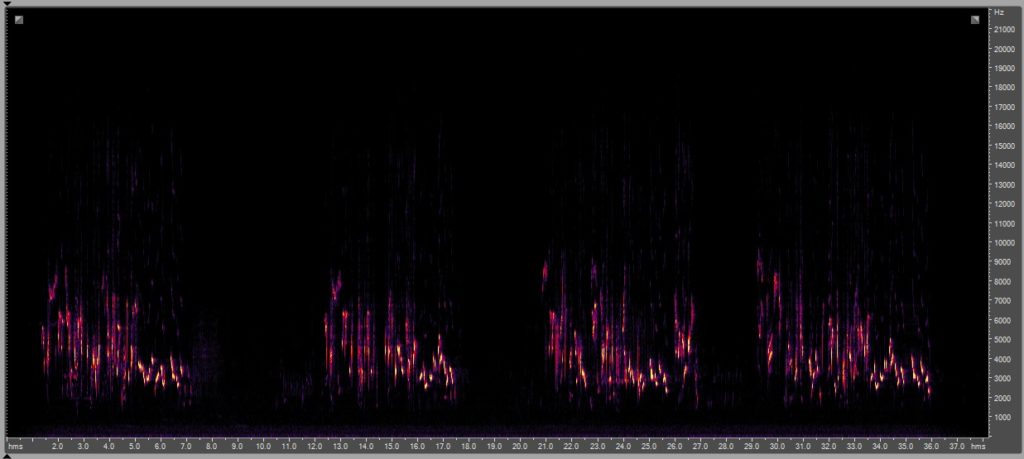
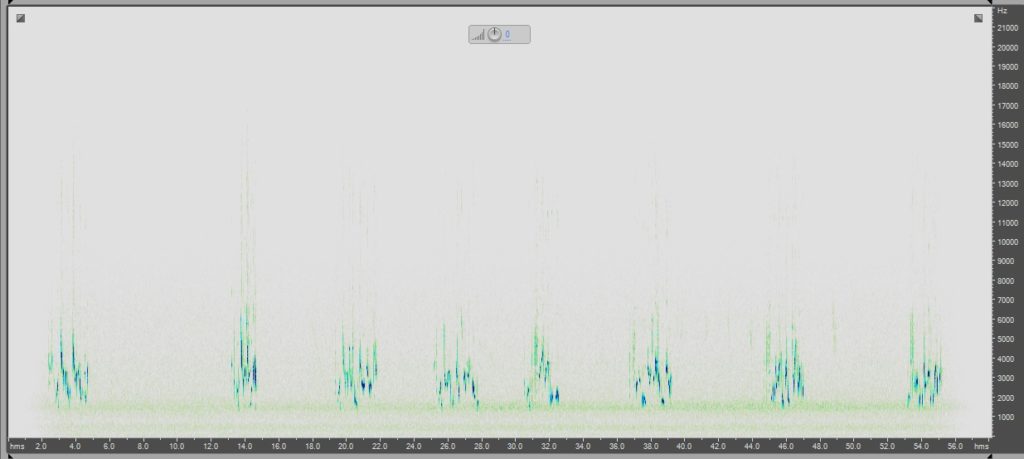
In the last decades we have seen a remarkable increase in subjects performing the so-called Leier song (but what does Leier mean? let’s hear from Giancarlo Fracasso…), a song characterized by one or two notes repeated several times in the final part of the song phrase (see below).
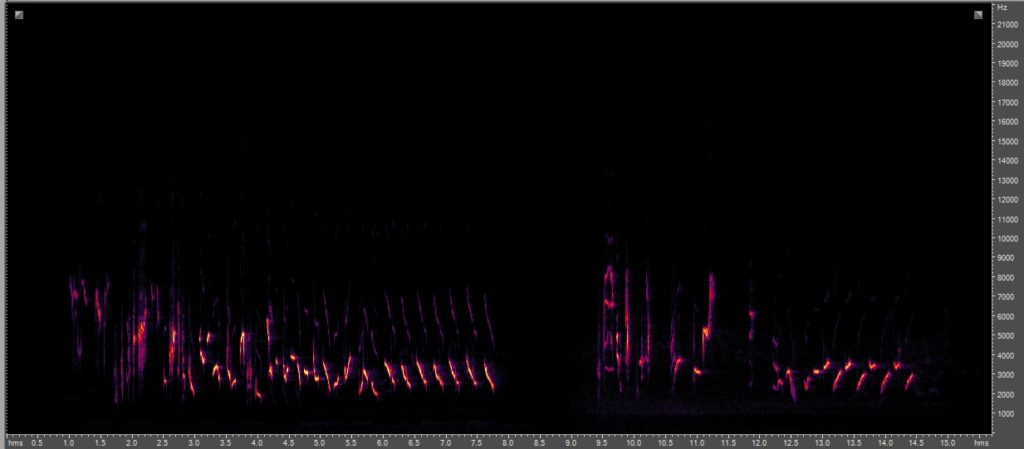
Blackcap Leier Song
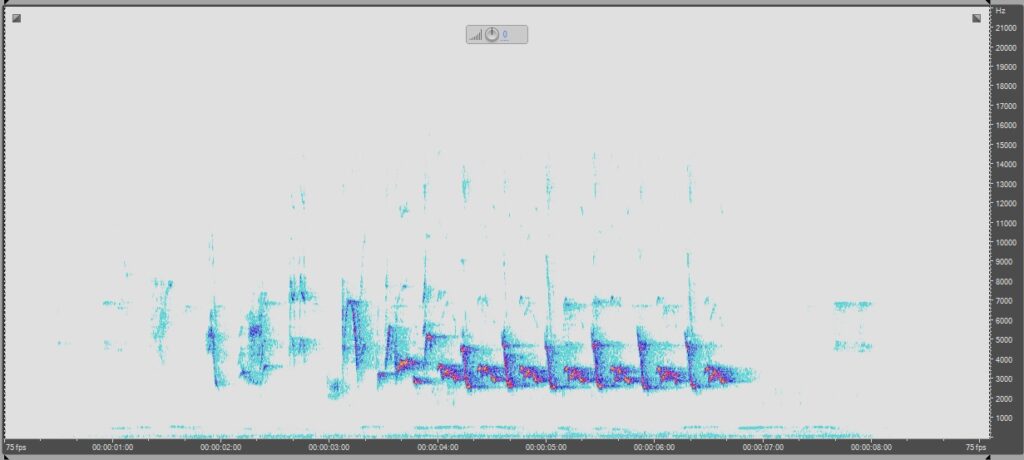
Blackcap Leier Song
Here a prolonged song, also known as plastic song
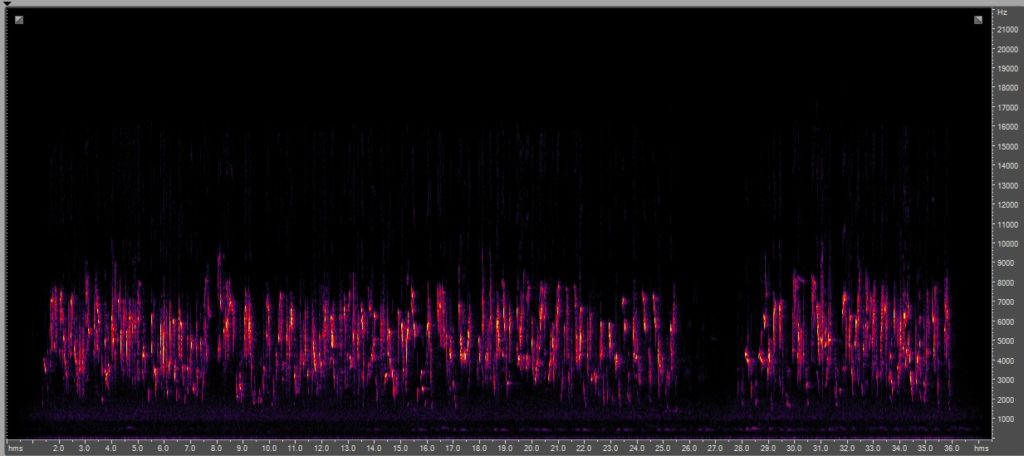
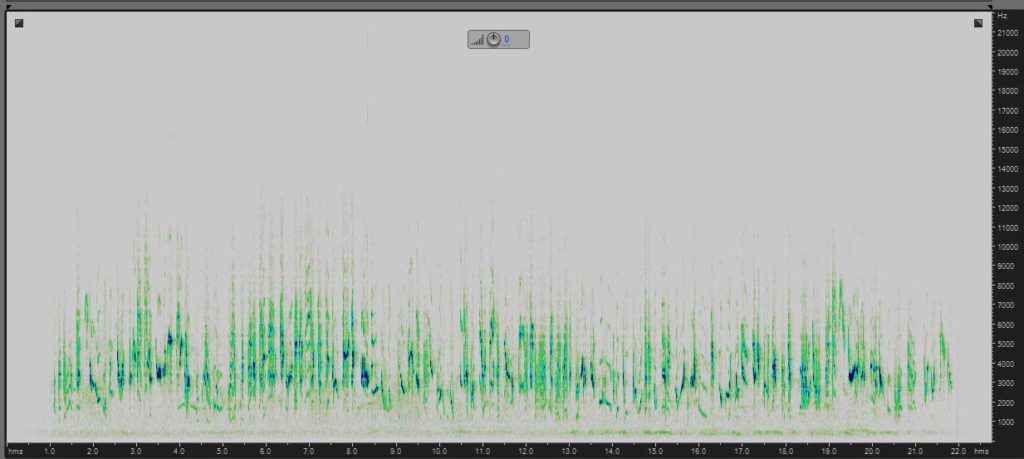
_________________________________________________________________________________________________________
Below we have four examples of the specialty of the blackcap: the imitative song.
It’s easier to hear it during the spring migration.
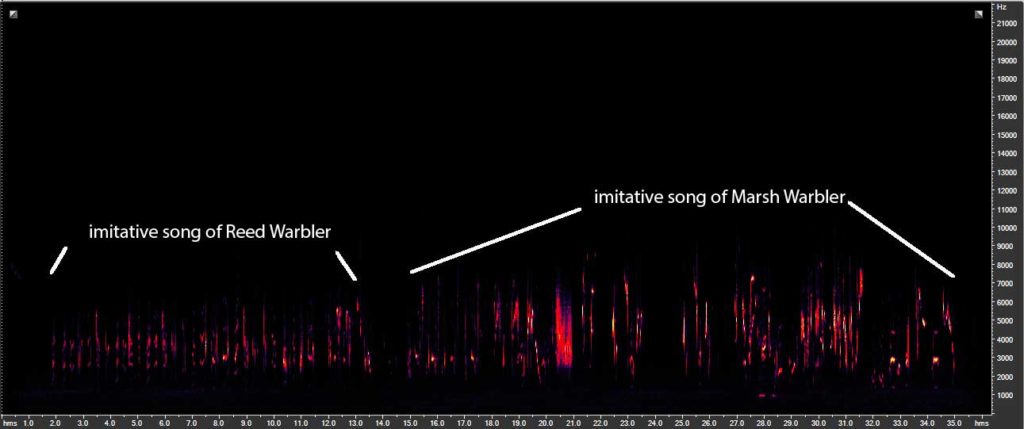
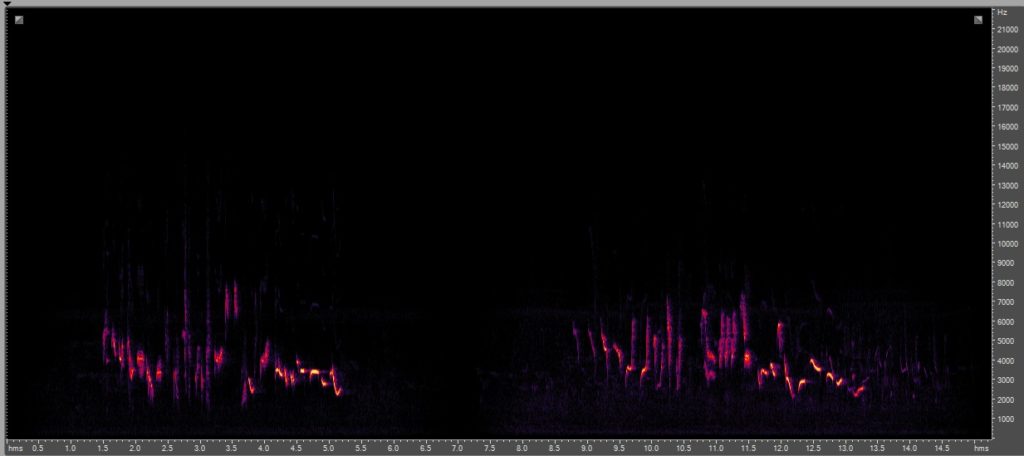
Now a subsong of a juvenile bird, mainly hearing in autumn and winter.
It’s very soft, with very long and interminable phrases.
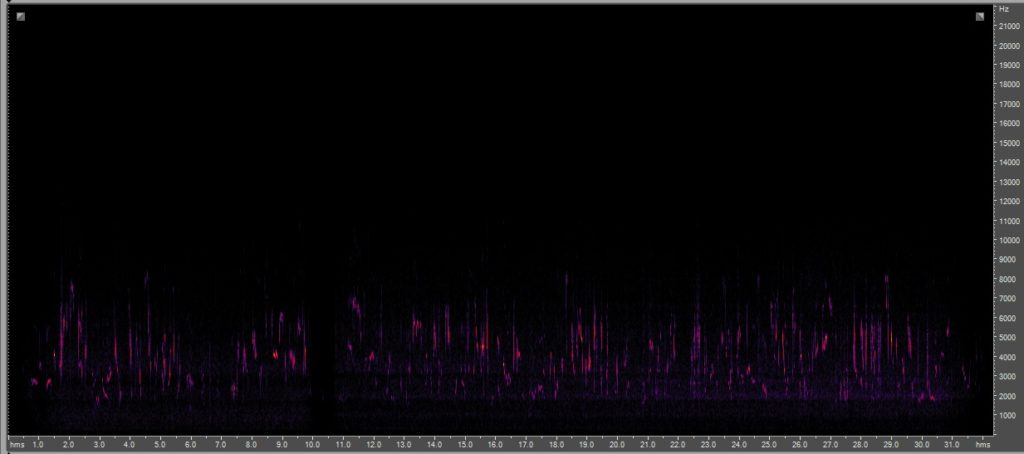
Finally a very curious and repetitive Blackcap song!
Juvenile MARSH WARBLER Subsong
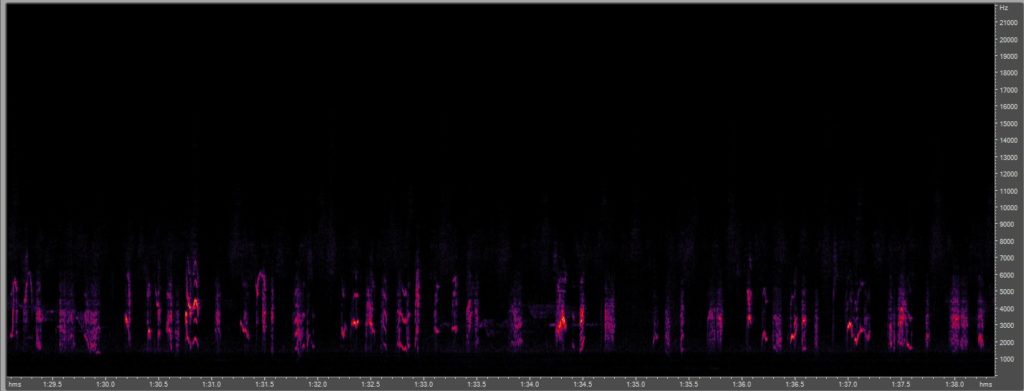
This is a subsong not so easy to record and particularly difficult to recognize: it is the song of a juvenile male of a Marsh Warbler, Acrocephalus palustris, about two months old, which already begins to emit its first singing phrases. In the last part of the file there is the generic call.
Questo è un sottocanto non facile da registrare e particolarmente difficile da riconoscere: è il canto di un giovane maschio di Cannaiola verdognola, Acrocephalus palustris, nato da meno di due mesi e già alle prese con le sue prime manifestazioni canore. Nell’ultima parte del file ci sono delle note di richiamo.
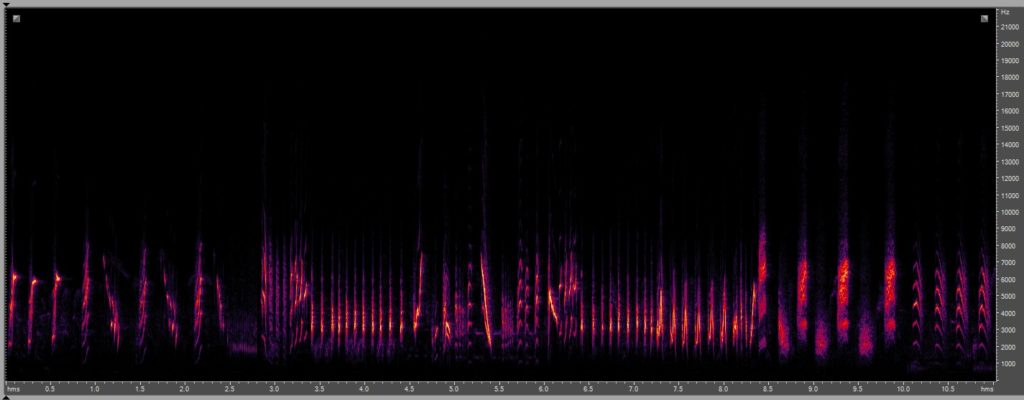
Adult birds of Marsh Warbler produce a complex song composed exclusively of dozens of imitations of songs and calls of other bird species, both of species found in Europe (nesting areas) and those found in South Est Africa (wintering quarters).
Gli adulti di Cannaiola verdognola producono un canto canto molto complesso, composto quasi esclusivamente da decine di imitazioni di canti e richiami di altre specie di uccelli, sia di specie presenti nell’areale di nidificazione europeo, sia nella zona si svernamento che si trova in Africa meridionale orientale.
PS – Audio files recorded using a DIY parabolic stereo microphone system.

Commenti recenti